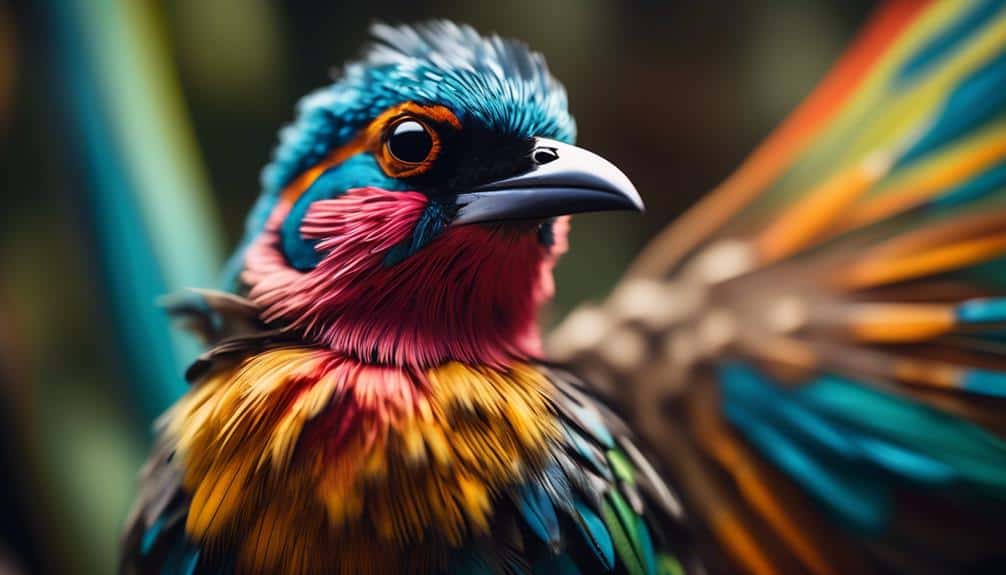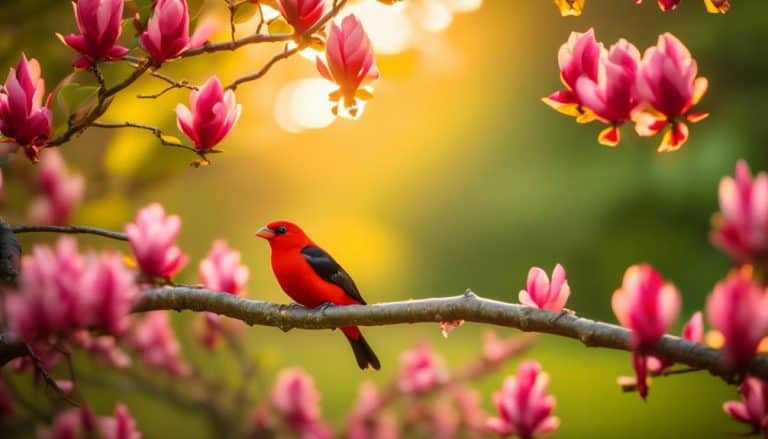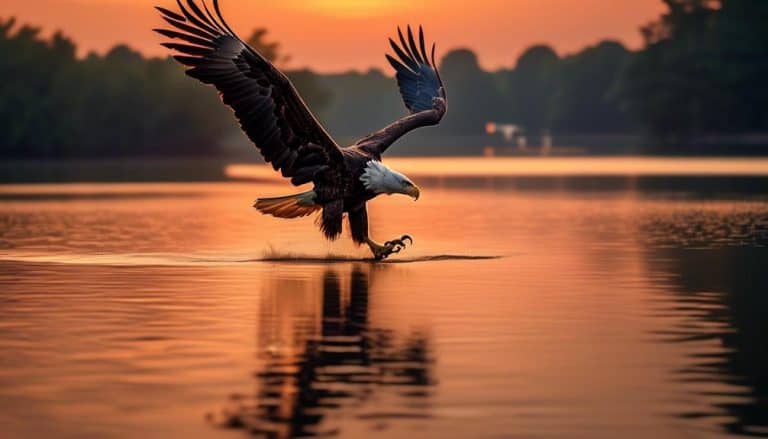As an avid birdwatcher, I've always been on the lookout for tools that enhance my experience in the field. That's why I was intrigued when I came across the world of birding monoculars.
Not only do they provide a compact alternative to traditional binoculars, but they also offer a range of benefits that can greatly enhance birding expeditions. From their portability to their ability to capture detailed images, birding monoculars have become a popular choice among enthusiasts.
But how do you choose the right one? And what features should you look for? In this discussion, we'll explore the world of birding monoculars, providing essential tips and recommendations for birdwatchers looking to take their hobby to new heights.
Benefits of Using a Birding Monocular
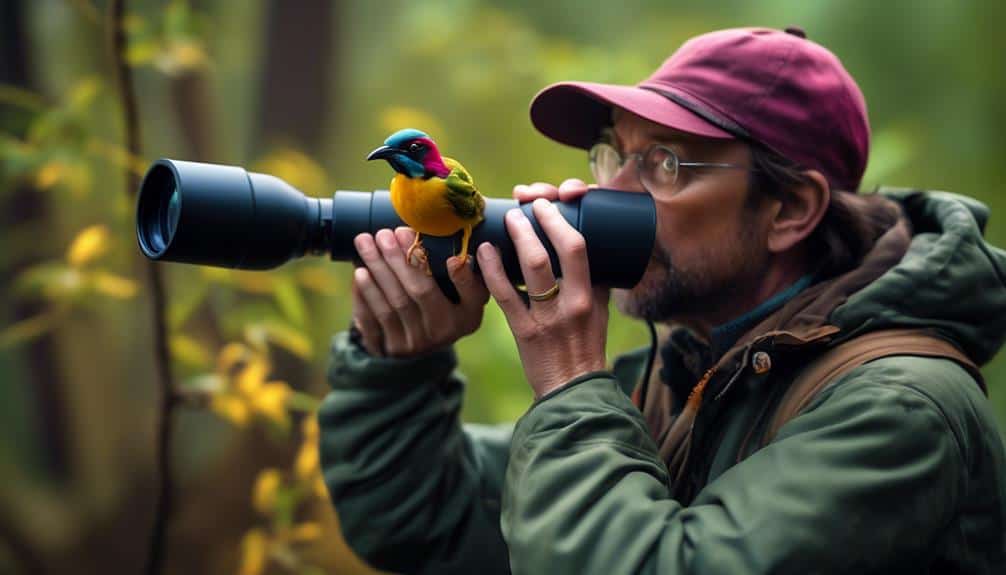
Using a birding monocular offers numerous advantages, allowing me to observe avian species with enhanced clarity and precision.
The primary advantage of using a birding monocular is its portability. Unlike binoculars, which can be bulky and heavy to carry around, a monocular is small, lightweight, and fits easily into a pocket or backpack. This makes it ideal for birdwatchers who often need to hike or travel long distances to reach remote birding locations.
Another advantage of using a birding monocular is its ability to provide a closer view of birds. With its high magnification power, I can zoom in on distant birds and observe intricate details that would be difficult to see with the naked eye. This enhanced clarity allows me to identify different species, observe their behavior, and appreciate their unique features.
In addition to these advantages, a birding monocular also has various uses. Firstly, it's an essential tool for bird identification and documentation. By capturing clear images or videos of birds, I can later review them and accurately identify the species. Moreover, a monocular can be used for scientific research purposes, such as studying bird migration patterns or monitoring populations in specific areas.
How to Choose the Right Birding Monocular
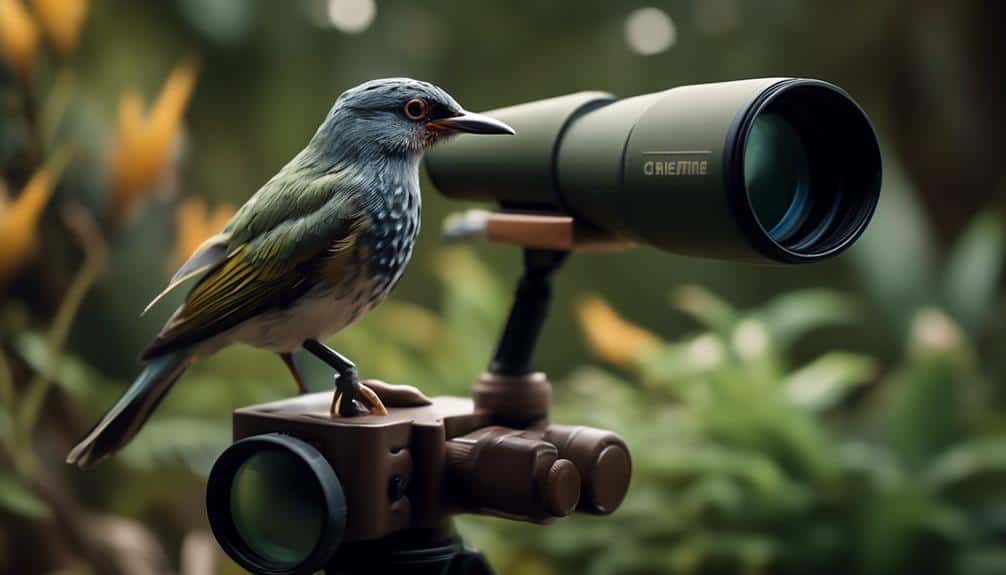
Having understood the benefits and uses of a birding monocular, it is crucial to know how to select the most suitable one for optimal birdwatching experience. When choosing a birding monocular, there are several factors to consider. Firstly, the magnification power plays a significant role. Higher magnification allows for better detail and clarity, but it also narrows the field of view. Therefore, striking a balance between magnification and field of view is essential. Additionally, the objective lens diameter affects the amount of light entering the monocular, which impacts image brightness. A larger objective lens diameter allows for better performance in low light conditions. The exit pupil diameter is another factor to consider, as it determines how bright the image appears. A larger exit pupil diameter is recommended for birdwatching in low light situations. Lastly, the monocular's size, weight, and durability should be considered, especially for those who plan to carry it for extended periods in the field.
To help you in your search for the perfect birding monocular, here is a table summarizing the main factors to consider when making your selection:
| Factors to Consider | |
|---|---|
| Magnification | Field of View |
| Objective Lens Diameter | Exit Pupil Diameter |
| Size | Weight |
| Durability | |
| Compactness |
By taking these factors into account, you can choose a birding monocular that suits your needs and enhances your birdwatching experience.
In addition to knowing what to look for when selecting a birding monocular, it is also important to be aware of common mistakes to avoid when using one. These include using too much magnification, resulting in a shaky image, not adjusting the focus properly, and forgetting to clean the lenses regularly. By keeping these mistakes in mind and taking necessary precautions, you can ensure a more enjoyable and successful birdwatching experience with your chosen monocular.
Essential Features to Look for in a Birding Monocular
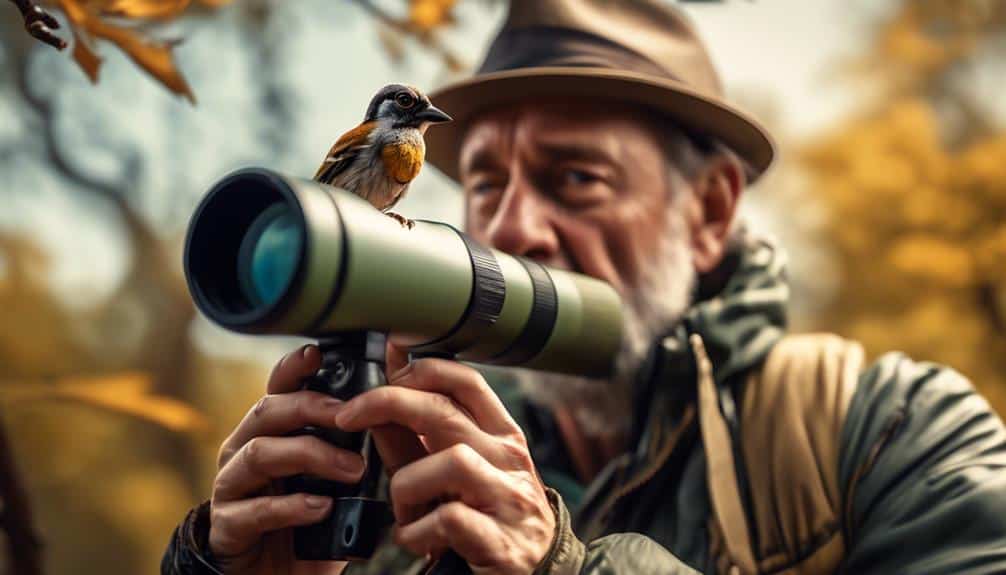
When selecting a birding monocular, it's crucial to consider the essential features that will enhance your birdwatching experience. Here are four important specifications to look for:
- Magnification: A birding monocular with a higher magnification power allows you to observe birds from a greater distance, capturing intricate details that might otherwise go unnoticed. Look for monoculars with magnification levels of 8x or higher for optimal viewing.
- Objective Lens Diameter: The size of the objective lens determines how much light can enter the monocular, resulting in brighter and clearer images. Opt for a monocular with a larger objective lens diameter, such as 30mm or 42mm, to ensure excellent visibility even in low-light conditions.
- Field of View: A wider field of view allows you to scan larger areas and follow birds in flight more easily. Look for monoculars with a generous field of view, typically measured in degrees or the width of the image at 1,000 yards.
- Durability: Since birding often involves outdoor adventures, it's essential to choose a monocular that's rugged and weatherproof. Top brands like Zeiss, Nikon, and Vortex offer models with robust construction and waterproofing, ensuring they can withstand the rigors of birdwatching in various environments.
Tips for Using a Birding Monocular Effectively
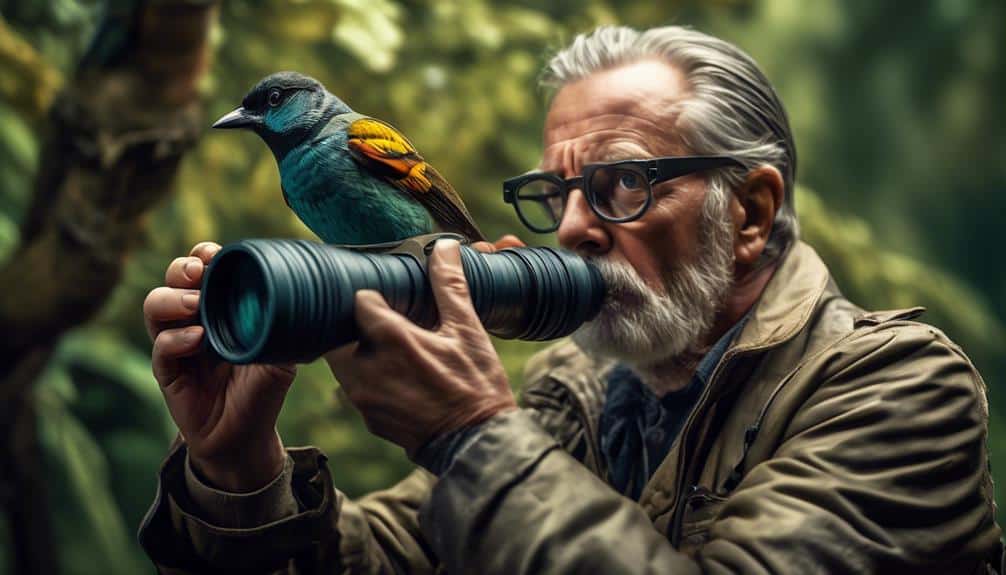
To effectively utilize a birding monocular, it's crucial to understand the proper techniques and strategies for maximizing your birdwatching experience. In addition to selecting a monocular with the right features, it's important to ensure proper maintenance of your birding monocular.
Regularly clean the lenses with a soft cloth to remove dust and smudges, and store it in a protective case when not in use. This will help maintain the clarity and sharpness of the images you observe.
Furthermore, investing in birding monocular accessories can greatly enhance your birdwatching experience. One such accessory is a tripod or monopod, which provides stability and reduces hand fatigue during prolonged use. This allows for steady and comfortable viewing, especially when observing birds from a distance.
Another useful accessory is a smartphone adapter, which allows you to attach your monocular to your phone, enabling you to capture high-quality images or videos of the birds you encounter. This is particularly beneficial for documenting rare or unique sightings.
Best Birding Monoculars on the Market
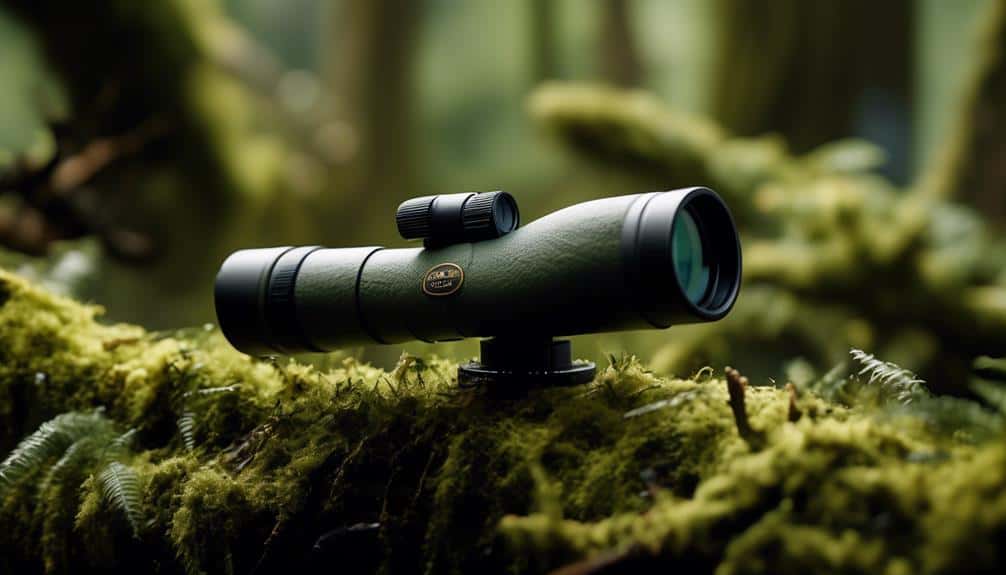
After extensive research and evaluation, I've identified the top birding monoculars currently available in the market. These monoculars offer exceptional features and performance, making them the ideal choice for birdwatching enthusiasts.
Here are the top birding monocular brands that stand out from the rest:
- Vortex Optics Solo 8×25 Monocular**: This compact and lightweight monocular is perfect for on-the-go birding. With its high-quality optics, you can expect sharp and clear images, even in low-light conditions. The rubber armor provides a comfortable grip and protects against impacts.
- Nikon Monarch 7 10×42 Monocular: Known for their superior optics, Nikon delivers exceptional image quality with this monocular. The ED glass and multi-coated lenses ensure bright, vibrant, and true-to-life colors. Its rugged design makes it suitable for all weather conditions.
- Celestron Nature DX 10×42 Monocular: Offering a wide field of view and excellent magnification, this monocular brings distant birds up close. The fully multi-coated lenses provide maximum light transmission, resulting in clear and detailed images. Its durable construction makes it a reliable companion in the field.
- Leica Monovid 8×20 Monocular**: This premium monocular combines superior optics with a compact and elegant design. The high-quality glass provides exceptional image clarity and brightness. Its waterproof and fogproof features ensure optimal performance in any weather conditions.
When comparing birding monoculars to binoculars, monoculars offer the advantage of being lightweight and easier to carry, making them more suitable for long birding expeditions. Additionally, monoculars provide a single-eye viewing experience, allowing for a steady and focused observation of birds.
Advanced Techniques for Birding With a Monocular
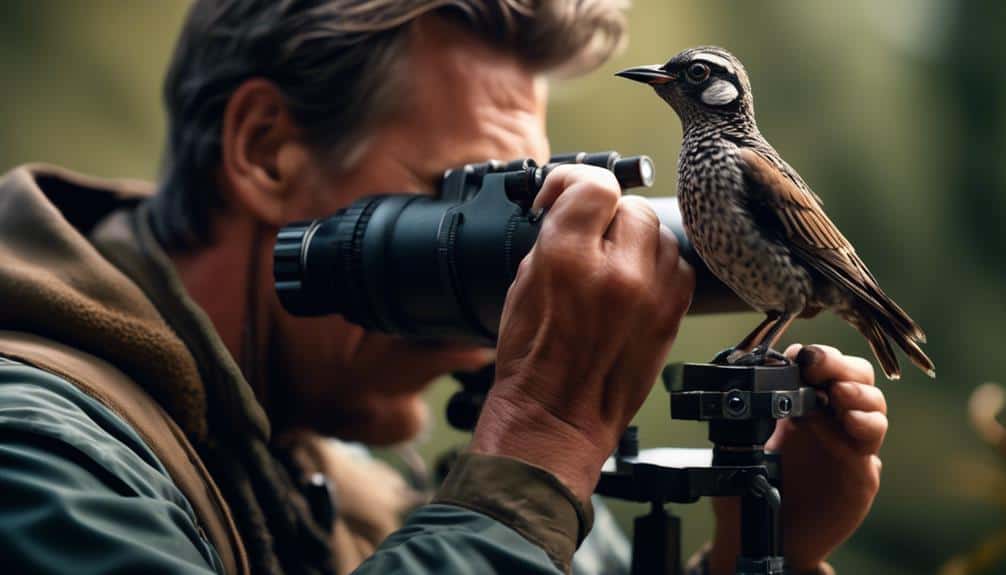
Having explored the top birding monoculars on the market, it's now time to delve into the advanced techniques for birding with a monocular.
These advanced techniques and birding strategies can greatly enhance your birdwatching experience, allowing you to observe birds in more detail and with greater precision.
One advanced technique is to use the monocular in combination with a tripod. By mounting the monocular on a stable tripod, you can achieve a steady and vibration-free view of the birds. This is particularly useful when observing birds from a distance or in low-light conditions.
Another advanced technique is to learn how to quickly adjust the focus of your monocular. Birds can move swiftly, and being able to quickly focus on them is crucial. Practice adjusting the focus ring of your monocular until you can do it effortlessly and without taking your eyes off the bird.
Additionally, advanced birders often employ the technique of scanning an area systematically. Instead of randomly looking around, start from one side of the area and slowly move your gaze in a sweeping motion. This allows you to cover the entire area and increases the chances of spotting birds that might otherwise go unnoticed.
Frequently Asked Questions
Can I Use a Birding Monocular for Other Outdoor Activities, Such as Hiking or Hunting?
Yes, a birding monocular can be used for other outdoor activities like hiking or hunting. It is a versatile tool that enhances visibility and allows for detailed observations of distant objects.
How Do I Clean and Maintain My Birding Monocular?
To clean and maintain my birding monocular, I follow specific techniques and practices. Cleaning involves using a soft cloth and lens cleaner. Maintenance includes regular inspection, storing in a protective case, and avoiding exposure to extreme temperatures.
Can I Use a Birding Monocular With Glasses or Contact Lenses?
Yes, you can use a birding monocular with glasses or contact lenses. The monocular's adjustable eyepiece allows for comfortable viewing with corrective lenses, ensuring a clear and focused image of birds in the distance.
Are Birding Monoculars Waterproof and Fog-Proof?
Yes, birding monoculars are typically waterproof and fog-proof. They have been designed to withstand the elements and provide clear vision even in challenging conditions. This ensures a seamless birding experience, rain or shine.
Is There a Warranty or Guarantee on Birding Monoculars?
Yes, there is usually an extended warranty or guarantee on birding monoculars. It's important to check the specific terms and conditions, including the length of the warranty and the return policy.
Conclusion
In conclusion, utilizing a birding monocular can greatly enhance one's bird-watching experience by providing clear and detailed observations of avian species. By carefully selecting a monocular with essential features such as magnification and lens quality, birding enthusiasts can optimize their viewing capabilities.
Additionally, employing effective techniques, such as maintaining a steady grip and focusing on specific bird attributes, can further elevate the birding experience.
Ultimately, investing in a top-notch birding monocular can be a game-changer for bird enthusiasts seeking to delve deeper into the world of ornithology.

